▼ Carbon capture and conversion to fuel now through a membrane! [11-29-17]
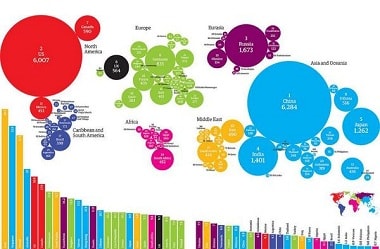 Massachusetts Institute of Technology (MIT) scientists have developed a new system that can convert carbon dioxide and other greenhouse gases into useful fuel for cars and aircraft.
The researchers used a membrane - made of lanthanum, calcium, and iron oxide. It allows the oxygen from carbon dioxide to migrate through the membrane to the other side, leaving carbon monoxide behind.
Carbon monoxide produced during this process can be used as a fuel by itself or combined with hydrogen and/or water to make many other liquid hydrocarbon fuels.
It can also be used to produce methanol (used as an automotive fuel), syngas, and so on.
This new process could become part of the carbon capture, utilisation and storage (CCUS) technologies which, if applied to electricity production, could reduce the impact of fossil fuel use on global warming.
The membrane is "100 percent selective for oxygen," allowing only those atoms to pass.
The researchers used a stream of fuel such as hydrogen or methane which get readily oxidised and draw the oxygen atoms through the membrane.
The membrane also prevents the oxygen from migrating back and recombining with the carbon monoxide, to form carbon dioxide all over again.
The method may not only cut greenhouse emissions; it could also produce another potential revenue stream to help defray its costs, researchers indicated. Massachusetts Institute of Technology (MIT) scientists have developed a new system that can convert carbon dioxide and other greenhouse gases into useful fuel for cars and aircraft.
The researchers used a membrane - made of lanthanum, calcium, and iron oxide. It allows the oxygen from carbon dioxide to migrate through the membrane to the other side, leaving carbon monoxide behind.
Carbon monoxide produced during this process can be used as a fuel by itself or combined with hydrogen and/or water to make many other liquid hydrocarbon fuels.
It can also be used to produce methanol (used as an automotive fuel), syngas, and so on.
This new process could become part of the carbon capture, utilisation and storage (CCUS) technologies which, if applied to electricity production, could reduce the impact of fossil fuel use on global warming.
The membrane is "100 percent selective for oxygen," allowing only those atoms to pass.
The researchers used a stream of fuel such as hydrogen or methane which get readily oxidised and draw the oxygen atoms through the membrane.
The membrane also prevents the oxygen from migrating back and recombining with the carbon monoxide, to form carbon dioxide all over again.
The method may not only cut greenhouse emissions; it could also produce another potential revenue stream to help defray its costs, researchers indicated.
|
▼ India-Greek cooperation in renewable energy [11-28-17]
 India and Greece have signed Air Services Agreement (ASA) and MoU on Cooperation (MoC) in field of New and Renewable Energy.
The agreements were signed after bilateral talks between External Affairs Minister (EAM) Sushma Swaraj and her visiting counterpart Minister for Foreign Affairs of Greece Nikos Kotzias in New Delhi.
The two ministers held detailed discussion on all aspects of bilateral relationship. They also re-affirmed commitment to further expand cooperation in mutually beneficial spheres India and Greece have signed Air Services Agreement (ASA) and MoU on Cooperation (MoC) in field of New and Renewable Energy.
The agreements were signed after bilateral talks between External Affairs Minister (EAM) Sushma Swaraj and her visiting counterpart Minister for Foreign Affairs of Greece Nikos Kotzias in New Delhi.
The two ministers held detailed discussion on all aspects of bilateral relationship. They also re-affirmed commitment to further expand cooperation in mutually beneficial spheres
|
▼ Bamboo no longer a tree under Indian Forest Act [11-24-17]
 After 90 years, the bamboo has legally ceased to be a tree with the government, on Thursday, amending the Indian Forest Act and axing the bamboo - taxonomically a grass - from a list of plants that also included palms, skumps, brush-wood and canes.
In doing so, said Union Environment Minister Dr. Harsh Vardhan, the government hoped to promote cultivation of bamboo in non-forest areas to achieve the "twin objectives" of increasing the income of farmers and also increasing the green cover of the country. Bamboo grown in the forest areas would continue to be governed by the provisions of the Indian Forest Act.
For several years now, the classification of the bamboo - with its multifarious uses as an edible item, furniture and construction - as a tree meant that it couldn't be easily ferried across State borders.
It also required permits from village councils and couldn't be cultivated in non-forest areas.
This will now create a viable option for cultivation in 12.6 million hectares of cultivable waste land. It will encourage farmers and other individuals to take up plantation/block plantation of suitable bamboo species on degraded land, in addition to plantation on agricultural land and other private lands under the agro-forestry mission.
Bamboo in India After 90 years, the bamboo has legally ceased to be a tree with the government, on Thursday, amending the Indian Forest Act and axing the bamboo - taxonomically a grass - from a list of plants that also included palms, skumps, brush-wood and canes.
In doing so, said Union Environment Minister Dr. Harsh Vardhan, the government hoped to promote cultivation of bamboo in non-forest areas to achieve the "twin objectives" of increasing the income of farmers and also increasing the green cover of the country. Bamboo grown in the forest areas would continue to be governed by the provisions of the Indian Forest Act.
For several years now, the classification of the bamboo - with its multifarious uses as an edible item, furniture and construction - as a tree meant that it couldn't be easily ferried across State borders.
It also required permits from village councils and couldn't be cultivated in non-forest areas.
This will now create a viable option for cultivation in 12.6 million hectares of cultivable waste land. It will encourage farmers and other individuals to take up plantation/block plantation of suitable bamboo species on degraded land, in addition to plantation on agricultural land and other private lands under the agro-forestry mission.
Bamboo in India
- The current demand of bamboo in India is estimated at 28 million tonnes.
- Though the country has 19% share of the world's area under bamboo cultivation, its market share in the sector is only 6%. At present, it imports timber and allied products, such as pulp, paper, and furniture.
- In 2015, it imported about 18.01 million cubic metres of timber and allied products worth र43,000 crore.
- The amendment will help in addressing some of these issues, besides meeting the demand from domestic production.
|
▼ Mercedes Benz first luxury car brand to meet BS VI emission standards [11-23-17]
 Mercedes-Benz, the country's biggest luxury car maker, will start introducing vehicles meeting the stringent Bharat Stage VI (BS-VI) emission standards in India from next year. It is the first in the segment to say so.
The first such cars will be rolled out for the Delhi market.
The central government has decided only BS-VI fuel must be supplied in the capital from April 1, two years before national rollout.
All new vehicles sold at present comply with BS-IV norms. Mercedes-Benz, the country's biggest luxury car maker, will start introducing vehicles meeting the stringent Bharat Stage VI (BS-VI) emission standards in India from next year. It is the first in the segment to say so.
The first such cars will be rolled out for the Delhi market.
The central government has decided only BS-VI fuel must be supplied in the capital from April 1, two years before national rollout.
All new vehicles sold at present comply with BS-IV norms.
|
▼ Government to transport coal in trucks, rail wagons [11-22-17]
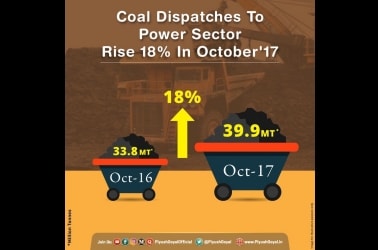 Government to transport coal in trucks, rail wagons
Scurrying for solutions to fight the toxic air pollution, the government has said it plans to transport coal in covered rail wagons and trucks across the country.
Ferrying of coal in uncovered vehicles and rail wagons is said to be one of the key reasons behind high pollution levels along the transportation route from coal mine or importing sea port to user plants like power generation houses. Government to transport coal in trucks, rail wagons
Scurrying for solutions to fight the toxic air pollution, the government has said it plans to transport coal in covered rail wagons and trucks across the country.
Ferrying of coal in uncovered vehicles and rail wagons is said to be one of the key reasons behind high pollution levels along the transportation route from coal mine or importing sea port to user plants like power generation houses.
|
▼ Bonn COP23 lays ground for Talanoa Dialogue [11-21-17]
 The UNFCCC Climate Change Conference (COP23) was held in Bonn, Germany and was presided over by Government of Fiji.
It concluded with countries putting in place a roadmap for 'Talanoa Dialogue', a year-long process to assess countries' progress on climate actions.
The Conference also made progress on framing rules for implementing 2015 Paris Agreement on climate change and brought rich nations on board on their pre-2020 commitments as demanded by developing nations.
Talanoa Dialogue: Know More The UNFCCC Climate Change Conference (COP23) was held in Bonn, Germany and was presided over by Government of Fiji.
It concluded with countries putting in place a roadmap for 'Talanoa Dialogue', a year-long process to assess countries' progress on climate actions.
The Conference also made progress on framing rules for implementing 2015 Paris Agreement on climate change and brought rich nations on board on their pre-2020 commitments as demanded by developing nations.
Talanoa Dialogue: Know More
- The 'Talanoa Dialogue' process would help them review their actions and discuss the way forward. Agreement on this stocktaking process is an important outcome of the Conference.
- It will discuss pre-2020 actions of rich nations apart from looking at the climate actions of all nations under the Paris Agreement.
- 'Talanoa' is a traditional approach used in Fiji and the Pacific to engage in an inclusive, participatory and transparent dialogue.
- As per the COP decision, it has been structured around three questions-where are we? Where do we want to go? And how do we get there? - to arrive at answers with consensus. "The dialogue will be conducted in a manner that promotes enhanced ambition.
- The dialogue will consider, as one of its elements, the efforts of Parties (countries) on (mitigation) action and (financial and technical) support, as appropriate, in the pre-2020 period", says an approach paper, adopted by all the countries as part of the final decision.
- The group could force the rich nations to agree for discussing their pre-2020 actions under the 'Talanoa Dialogue' (2018 facilitative dialogue) and bring them on board to get their performance reviewed next year and also in 2019.
|
▼ Farm stubble to mitigate concern on air pollution [11-20-17]
 To help mitigate concern on air pollution, state-owned thermal power giant NTPC would procure farm stubble for burning in its thermal units, blending close to 10 per cent in the fuel mix, power ministry officials said.
This comes in wake on worsening air conditions across North India, attributed in large measure to burning of crop stubble by farmers in Punjab and Haryana (and western UP) at the onset of winter. To help mitigate concern on air pollution, state-owned thermal power giant NTPC would procure farm stubble for burning in its thermal units, blending close to 10 per cent in the fuel mix, power ministry officials said.
This comes in wake on worsening air conditions across North India, attributed in large measure to burning of crop stubble by farmers in Punjab and Haryana (and western UP) at the onset of winter.
|
▼ BS-VI norms delayed [11-16-17]
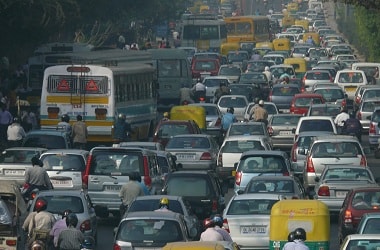 The Union Ministry of Petroleum and Natural Gas (MoPNG) has announced a 2-year advancement of the introduction of Bharat Stage (BS)-VI fuel norms from April 1, 2018 in Delhi, currently suffering from its worst smog crisis in years.
Bharat Stage emission standards, introduced in 2000, are emission standards that have been set up the Central government to regulate the output of air pollutants from internal combustion engine equipment, including motor vehicles. The different norms are brought into force in accordance with the timeline and standards set up by the Central Pollution Control Board which comes under the Ministry of Environment and Forests and Climate Change.
The Bharat Stage norms are based on European regulations. In 13 major cities,
Bharat Stage IV emission standards were put in place in April 2010.
BS-IV norms were supposed to come into effect nationwide from April 2017.
Difference in BS-IV and BS-VI standards
The BS norms have been similar to Euro norms till now, and with norms after BS-IV not defined yet, we compare the existing BS-III and BS-IV norms in India with the Euro 6 norms on which India's emission norms have been set.
Petrol Emission Norms (All figures in g/km) The Union Ministry of Petroleum and Natural Gas (MoPNG) has announced a 2-year advancement of the introduction of Bharat Stage (BS)-VI fuel norms from April 1, 2018 in Delhi, currently suffering from its worst smog crisis in years.
Bharat Stage emission standards, introduced in 2000, are emission standards that have been set up the Central government to regulate the output of air pollutants from internal combustion engine equipment, including motor vehicles. The different norms are brought into force in accordance with the timeline and standards set up by the Central Pollution Control Board which comes under the Ministry of Environment and Forests and Climate Change.
The Bharat Stage norms are based on European regulations. In 13 major cities,
Bharat Stage IV emission standards were put in place in April 2010.
BS-IV norms were supposed to come into effect nationwide from April 2017.
Difference in BS-IV and BS-VI standards
The BS norms have been similar to Euro norms till now, and with norms after BS-IV not defined yet, we compare the existing BS-III and BS-IV norms in India with the Euro 6 norms on which India's emission norms have been set.
Petrol Emission Norms (All figures in g/km)
| Emission Norm | CO | HC | NOx | HC+NOx | PM |
|---|
| BS-III | 2.30 | 0.20 | 0.15 | | | | BS-IV | 1.00 | 0.10 | 0.08 | | | | Euro 6 | 1.00 | 0.10 | 0.06 | | 0.005 |
Diesel Emission Norms (All figures in g/km)
| Emission Norm | CO | HC | NOx | HC+NOx | PM |
|---|
| BS-III | 0.64 | - | 0.50 | 0.56 | 0.05 | | BS-IV | 0.50 | - | 0.25 | 0.30 | 0.025 | | Euro 6 | 0.50 | - | 0.06 | 0.17 | 0.005 |
Source - Indian Emissions Regulations/ARAI
|
▼ India - World's largest sulphur dioxide emitter [11-15-17]
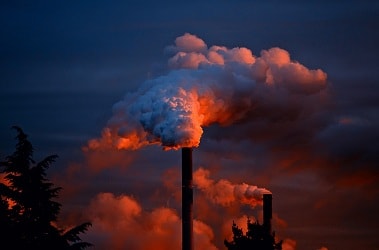 India's emissions of the air pollutant sulphur dioxide increased by 50 per cent since 2007, while China's fell by 75 per cent, claims a study which found that India is yet to implement emission controls like its neighbour.
The study led by researchers at University of Maryland in the US suggests that India is becoming, if it is not already, the world's top sulphur dioxide emitter.
Sulphur dioxide is an air pollutant that causes acid rain, haze and many health-related problems. It is produced predominantly when coal is burned to generate electricity.
The rapid decrease of sulphur dioxide emissions in China far exceeds expectations and projections.
This suggests that China is implementing sulphur dioxide controls beyond what climate modellers have taken into account.
China and India are the world's top consumers of coal, which typically contains up to three per cent sulphur, researchers said.
Most of the two countries' sulphur dioxide emissions come from coal-fired power plants and coal-burning factories.
In particular, Beijing suffers from severe haze problems because of the many coal-burning factories and power plants located nearby and upwind.
Starting in the early 2000s, China began implementing policies such as fining polluters, setting emission reduction goals and lowering emissions limits.
According to the results of the current study, these efforts are paying off.
Despite China's 75 per cent drop in sulphur dioxide emissions, recent work by other scientists has shown that the country's air quality remains poor and continues to cause significant health problems.
This may be because sulphur dioxide contributes to only about 10 to 20 per cent of the air particles that cause haze, according to Li.
By contrast, India's sulphur dioxide emissions increased by 50 per cent over the past decade.
The country opened its largest coal-fired power plant in 2012 and has yet to implement emission controls like China. India's emissions of the air pollutant sulphur dioxide increased by 50 per cent since 2007, while China's fell by 75 per cent, claims a study which found that India is yet to implement emission controls like its neighbour.
The study led by researchers at University of Maryland in the US suggests that India is becoming, if it is not already, the world's top sulphur dioxide emitter.
Sulphur dioxide is an air pollutant that causes acid rain, haze and many health-related problems. It is produced predominantly when coal is burned to generate electricity.
The rapid decrease of sulphur dioxide emissions in China far exceeds expectations and projections.
This suggests that China is implementing sulphur dioxide controls beyond what climate modellers have taken into account.
China and India are the world's top consumers of coal, which typically contains up to three per cent sulphur, researchers said.
Most of the two countries' sulphur dioxide emissions come from coal-fired power plants and coal-burning factories.
In particular, Beijing suffers from severe haze problems because of the many coal-burning factories and power plants located nearby and upwind.
Starting in the early 2000s, China began implementing policies such as fining polluters, setting emission reduction goals and lowering emissions limits.
According to the results of the current study, these efforts are paying off.
Despite China's 75 per cent drop in sulphur dioxide emissions, recent work by other scientists has shown that the country's air quality remains poor and continues to cause significant health problems.
This may be because sulphur dioxide contributes to only about 10 to 20 per cent of the air particles that cause haze, according to Li.
By contrast, India's sulphur dioxide emissions increased by 50 per cent over the past decade.
The country opened its largest coal-fired power plant in 2012 and has yet to implement emission controls like China.
|
▼ Wild Banana species in Andaman and Nicobar Islands [11-9-17]
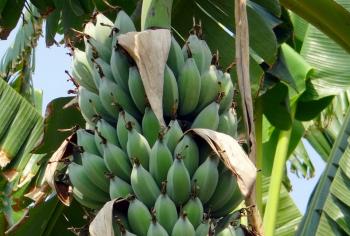 Andaman and Nicobar islands is a biodiversity hotspot that hosts seven different species of wild banana that we know of, not to mention numerous, as yet undocumented, others.
The latest discovery, published in the Nordic Journal of Botany, is of a species of wild banana named Musa paramjitiana, in honour of Paramjit Singh, who happens to be the director of the Botanical Survey of India (BSI).
The species was found in North Andaman's Krishnapuri forest, 6 kilometres from any human habitation.
The plant grows to a height of nine metres and bears an edible, sweet-and-sour tasting fruit that is boat-shaped and has numerous bulb-shaped seeds.
Its conservation status has been declared as 'Critically Endangered' as it has so far been spotted in only two locations on the islands, each with 6 to 18 plants in a clump.
The fruit is part of the diet of local tribes.
The fruits and seeds have ethno-medicinal importance. Pseudo-stem and leaves of these species are also used during religious and cultural ceremonies.
The germplasm of all the wild banana species needs to be conserved on an urgent basis, since most of these are found in very small habitats and at risk of extinction.
In 2014, Musa indandamanensis, another wild banana, was discovered in a remote tropical rain forest on the Little Andaman island. It has dark green cylindrical flower buds. Andaman and Nicobar islands is a biodiversity hotspot that hosts seven different species of wild banana that we know of, not to mention numerous, as yet undocumented, others.
The latest discovery, published in the Nordic Journal of Botany, is of a species of wild banana named Musa paramjitiana, in honour of Paramjit Singh, who happens to be the director of the Botanical Survey of India (BSI).
The species was found in North Andaman's Krishnapuri forest, 6 kilometres from any human habitation.
The plant grows to a height of nine metres and bears an edible, sweet-and-sour tasting fruit that is boat-shaped and has numerous bulb-shaped seeds.
Its conservation status has been declared as 'Critically Endangered' as it has so far been spotted in only two locations on the islands, each with 6 to 18 plants in a clump.
The fruit is part of the diet of local tribes.
The fruits and seeds have ethno-medicinal importance. Pseudo-stem and leaves of these species are also used during religious and cultural ceremonies.
The germplasm of all the wild banana species needs to be conserved on an urgent basis, since most of these are found in very small habitats and at risk of extinction.
In 2014, Musa indandamanensis, another wild banana, was discovered in a remote tropical rain forest on the Little Andaman island. It has dark green cylindrical flower buds.
|
▼ New species of Orangutan discovered [11-7-17]
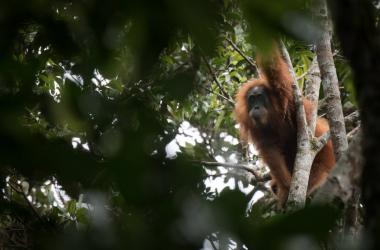 Scientists had thought that there were two orangutan species: the Sumatran orangutan (Pongo abelii) and the Bornean orangutan (Pongo pygmaeus).
However, the physical and genetic data now show that an isolated population of orangutans in Batang Toru, a region within the three Tapanuli districts in the province of North Sumatra, represents a distinct species.
Tapanuli orangutans were morphologically different from all other orangutans.
The researchers also reconstructed the history of the Tapanuli population.
Their calculations show that the population appears to have been isolated from all other Sumatran populations for at least 10,000 to 20,000 years.
The oldest evolutionary line in the genus Pongo is actually found in Tapanuli orangutans, which appear to be direct descendants of the first Sumatran population in the Sunda archipelago. Scientists had thought that there were two orangutan species: the Sumatran orangutan (Pongo abelii) and the Bornean orangutan (Pongo pygmaeus).
However, the physical and genetic data now show that an isolated population of orangutans in Batang Toru, a region within the three Tapanuli districts in the province of North Sumatra, represents a distinct species.
Tapanuli orangutans were morphologically different from all other orangutans.
The researchers also reconstructed the history of the Tapanuli population.
Their calculations show that the population appears to have been isolated from all other Sumatran populations for at least 10,000 to 20,000 years.
The oldest evolutionary line in the genus Pongo is actually found in Tapanuli orangutans, which appear to be direct descendants of the first Sumatran population in the Sunda archipelago.
|
▼ New hotspots of rattan discovered in Western Ghats [11-6-17]
 Scientists have discovered that non-protected areas near the Agastyamalai Biosphere Reserve, Silent Valley-Mukurthi National Parks and Coorg-Wayanad in the Western Ghats are hotspots of rattan or cane (light, flexible climbing palms) species.
Urgent conservation attention in the face of threats including habitat loss and excessive harvesting would be critical here.
More than half a million people are directly employed in harvesting and processing rattan in Southeast Asia, including India.
Though unsustainable harvests driven by rising demands are decimating rattan stands (clumps) worldwide, how are the rattans of the Western Ghats faring, was a the question studied.
Using location records from field studies and literature, scientists at Bengaluru's Asoka Trust for Ecology and Environment (ATREE) and Pune's Indian Institute for Science Education and Research (IISER) first mapped the distribution of all 21 endemic rattan species across the Western Ghats.
At 19, the Western Ghats in Kerala and Tamil Nadu have the highest number of species.
The team then designated 'conservation values' (CV) for each species based on aspects such as the area it is found in and the commercial harvesting pressure it faces.
Three species (including Calamus neelagiricus which is found only in Kerala's Silent Valley National Park) showed very high CV; the authors suggest that these be classified as endangered (based on categories developed by the International Union for the Conservation of Nature) while three others be categorised as near-threatened and 15 as vulnerable for prioritising conservation action.
The scientists also identified three rattan hotspots in the Western Ghats. - near the Agastyamalai Biosphere Reserve, Silent Valley-Mukurthi National Parks and Coorg-Wayanad regions.
All these areas fall outside existing protected area networks, where excessive unsustainable harvests could be a problem. Loss of tropical forest tracts to coffee and tea plantations - as is common in the Coorg-Wayanad complex - is also an issue. Scientists have discovered that non-protected areas near the Agastyamalai Biosphere Reserve, Silent Valley-Mukurthi National Parks and Coorg-Wayanad in the Western Ghats are hotspots of rattan or cane (light, flexible climbing palms) species.
Urgent conservation attention in the face of threats including habitat loss and excessive harvesting would be critical here.
More than half a million people are directly employed in harvesting and processing rattan in Southeast Asia, including India.
Though unsustainable harvests driven by rising demands are decimating rattan stands (clumps) worldwide, how are the rattans of the Western Ghats faring, was a the question studied.
Using location records from field studies and literature, scientists at Bengaluru's Asoka Trust for Ecology and Environment (ATREE) and Pune's Indian Institute for Science Education and Research (IISER) first mapped the distribution of all 21 endemic rattan species across the Western Ghats.
At 19, the Western Ghats in Kerala and Tamil Nadu have the highest number of species.
The team then designated 'conservation values' (CV) for each species based on aspects such as the area it is found in and the commercial harvesting pressure it faces.
Three species (including Calamus neelagiricus which is found only in Kerala's Silent Valley National Park) showed very high CV; the authors suggest that these be classified as endangered (based on categories developed by the International Union for the Conservation of Nature) while three others be categorised as near-threatened and 15 as vulnerable for prioritising conservation action.
The scientists also identified three rattan hotspots in the Western Ghats. - near the Agastyamalai Biosphere Reserve, Silent Valley-Mukurthi National Parks and Coorg-Wayanad regions.
All these areas fall outside existing protected area networks, where excessive unsustainable harvests could be a problem. Loss of tropical forest tracts to coffee and tea plantations - as is common in the Coorg-Wayanad complex - is also an issue.
|
▼ Paris agreement lacks effective implementation: UNEP report [11-3-17]
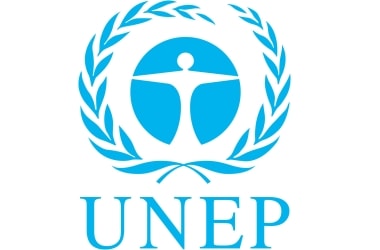 National pledges on emission reduction, made by countries from across the globe under the Paris Agreement, will only bring a third of what is needed to avoid worst impact of climate change, says a report of the United Nations Environment Programme (UNEP).
Released in Geneva in Nov 2017, the report notes that even full implementation of current unconditional and conditional national climate actions makes a temperature increase of at least 3 degree Celsius by 2100.
This is meaning that the governments need to deliver much stronger pledges when they are revised in 2020.
The Paris Agreement, approved by 195 countries in December, 2015, aims to limit global warming to under 2 degree Celsius, with a more ambitious goal of 1.5 degree Celsius also on table.
The countries had, therefore, pledged to take their voluntary climate actions including emission reduction through multiple measures to meet the target.
It is expected that meeting these targets would reduce the likelihood of severe climate impacts that could damage human health, livelihoods and economies across the globe.
The UNEP report has, however, found that these pledges would only bring a third of the reduction in emissions required by 2030 to meet climate targets.
It, therefore, pitched for an urgent need to increase the ambition by both governments and non-state actors.
UNEP Emission Gap Report: Know More National pledges on emission reduction, made by countries from across the globe under the Paris Agreement, will only bring a third of what is needed to avoid worst impact of climate change, says a report of the United Nations Environment Programme (UNEP).
Released in Geneva in Nov 2017, the report notes that even full implementation of current unconditional and conditional national climate actions makes a temperature increase of at least 3 degree Celsius by 2100.
This is meaning that the governments need to deliver much stronger pledges when they are revised in 2020.
The Paris Agreement, approved by 195 countries in December, 2015, aims to limit global warming to under 2 degree Celsius, with a more ambitious goal of 1.5 degree Celsius also on table.
The countries had, therefore, pledged to take their voluntary climate actions including emission reduction through multiple measures to meet the target.
It is expected that meeting these targets would reduce the likelihood of severe climate impacts that could damage human health, livelihoods and economies across the globe.
The UNEP report has, however, found that these pledges would only bring a third of the reduction in emissions required by 2030 to meet climate targets.
It, therefore, pitched for an urgent need to increase the ambition by both governments and non-state actors.
UNEP Emission Gap Report: Know More
- The report - UNEP's Emission Gap Report - was released just days ahead of the UN Climate Change Conference (COP23) in Bonn where the member countries including India will during November 6-17 Conference discuss guidelines to implement actions under the Paris Agreement which had come into force in November last year.
- The Emission Gap Report finds that current Paris pledges make 2030 emissions likely to reach 11 to 13.5 gigatonnes of carbon dioxide equivalent (GtCO2e) above the level needed to stay on the least-cost path to meeting the 2 degree Celsius target.
- One gigatonne is roughly equivalent to one year of transport emissions in the European Union (including aviation).
- The emission gap in the case of the 1.5 degree Celsius target is 16 to 19 GtCO2e.
The report claims that the carbon dioxide emissions have remained stable since 2014, driven in part by renewable energy, notably in China and India.
- However, it warns that other greenhouse gases, such as methane, are still rising and a global economic growth spurt could easily put CO2 emissions back on an upward trajectory.
|